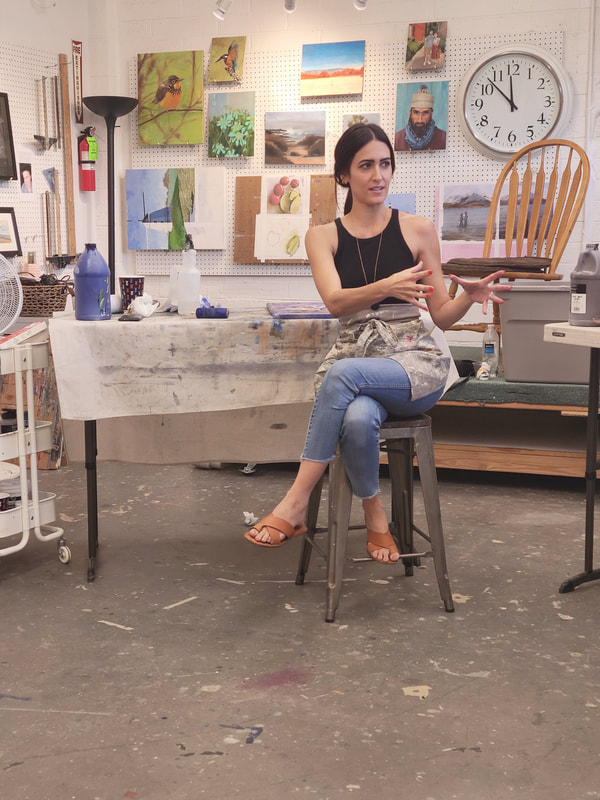|
The more rules you seek, the more rules you'll find. But be warned: Don't steep yourself so deep in learning the rules that you become stuck and paralyzed to approach the blank canvas. Keep in mind that when it comes to art, there are no right or wrong answers, only different results. Feel free to make your own rules. I encourage you to make good use of time and practice. After 13 years of painting professionally, composition feels like "background music" - I know it's there, but it's not something I have at the forefront of my mind. Getting to this stage came as a result of painting nearly one thousand canvases in the life span of my career. Throughout the years, I've abstained from writing about composition because I don't want to add to the fear. However, Composition Basics is something we cover in my workshops, so it is my sincere hope that you find the following principles useful in your creative process. Top 12 "Fearless" Abstract Composition Principles1. When you see objects from a distance, you see objects less clearly - Colors change in value, saturation and hue. Using the principles of Atmospheric Perspective creates the illusion of depth in your paintings.
2. Dark colors tend to appear "heavier" than light colors. Place darker colors on the bottom of your painting to "ground" your painting and assign a "bottom" to your canvas. 3. Light colors appear buoyant/less heavy than dark colors. Place light colours at the top of your painting to "lift" a painting and assign a "top" to your canvas. 4. Texture "grounds" a painting because it makes a painting appear heavy. Concentrating the texture on the bottom of your canvas will ground your painting. 5. Areas of light texture makes a painting appear buoyant/less heavy. Place less textured areas near the top of your canvas. 6. Abstain from placing a horizontal line in the middle of your canvas or diagonally across the middle. Place your "horizon line" either above or below the middle. This makes the composition more interesting for the eyes. 7. Play around with moving the areas of high visual interest and contract away from the middle. Abstain from placing items bullseye-center on your canvas. This is less interesting for the eyes. 8. We live in a world ruled by gravity, Drips moving down make sense. Drips moving up cause tension and make a painting feel more energized/anxious. Play around with placing your drips in different directions to elicit varying emotional effects in your viewer. 9. Paint as though the canvas has no beginning and no end. There's nothing worse than being reminded that I am looking at a painting limited by where the canvas begins and ends. Don't be afraid to paint off the canvas. This will give the viewer a feeling of expansion VS contraction. 10. The human eye loves contrast. Make good use of this. Play around with areas of dark VS light, texture VS no texture, crackled texture VS peeling texture, etc. 11. Play the "360 Game" - Rotate your canvas in every direction to see it from different orientations. If your painting looks good in every orientation, it's likely that you have a strong composition. 12. If you feel contrived while you're painting, this is likely how you are going to make your viewer feel. If you want your audience to experience feelings of freedom and wild abandon when they look at your painting, you have to approach the canvas using those same emotions. Comments are closed.
|
This blog was created to share my belief that the art-making process is a catalyst for transformation and personal empowerment. I am living proof.
Categories
All
|
